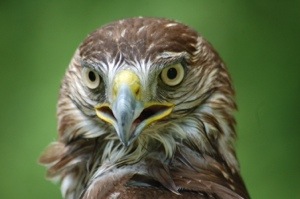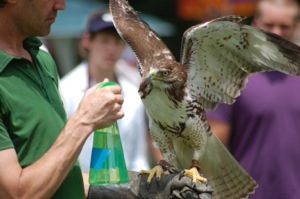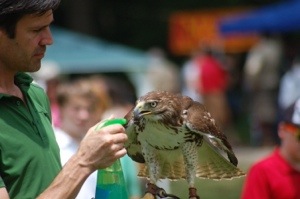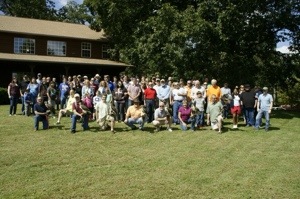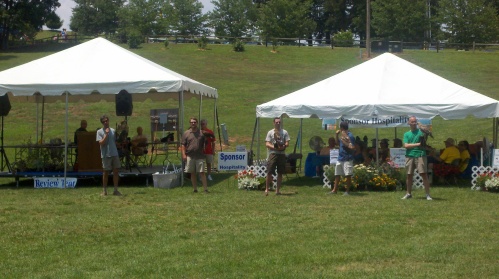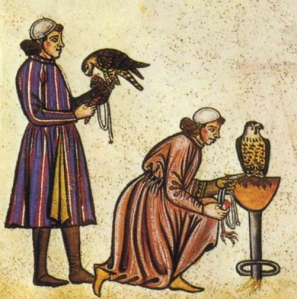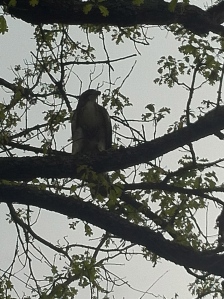 Part of the joy of falconry is getting to know your hunting partners, the majestic birds of prey that make the sport possible, interesting and unpredictable. I trapped my first bird, Lexi, three years ago as an apprentice and while I had three successful hunting seasons with her and am now a general falconer, something in me said it was time to say goodbye.
Part of the joy of falconry is getting to know your hunting partners, the majestic birds of prey that make the sport possible, interesting and unpredictable. I trapped my first bird, Lexi, three years ago as an apprentice and while I had three successful hunting seasons with her and am now a general falconer, something in me said it was time to say goodbye.
In general parting is such sweet sorrow, and releasing a hawk you’ve cared for night and day over the last three years is no exception. She served me well. As a gesture of thanks, one that she will never understand but that I am nonetheless compelled to share with you in the hopes that it inspires in you a newfound respect for these remarkable animals and this endlessly entertaining sport, I would like to share the short story of her release with you.
My brother-in-law, Zach Travers, and I had just released his male red-tailed hawk, Heath, with little fanfare. Heath was a mellow fellow, and though we had removed his anklets and jesses (he was now free), he sat on his perch at the edge of the wood for a quarter of an hour before deciding to fly off. Lexi, as usual, was much more dramatic in her departure.
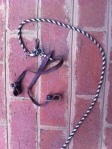 No sooner had we removed her anklets and jesses, than she flew aggressively away. She perched in a neighboring tree some 25 feet up, roused and surveyed the scene. Though I had gradually increased her weight prior to her release (done as a precaution to give a newly released bird a fair chance at reorienting to life in the wild), I thought I’d offer her one more meal from my glove.
No sooner had we removed her anklets and jesses, than she flew aggressively away. She perched in a neighboring tree some 25 feet up, roused and surveyed the scene. Though I had gradually increased her weight prior to her release (done as a precaution to give a newly released bird a fair chance at reorienting to life in the wild), I thought I’d offer her one more meal from my glove.
I pulled out a defrosted quail and gave the call “Lexiiii, huuup!” that on hungrier days would bring her down from anywhere in seconds. She turned her head, but looked away dismissively, like a supermodel turning down a dance request. I called once again, but it was clear that she was going to stay put. Not to be out-maneuvered, I told Zach that I was going to toss the quail up to her and see what happened.
I readied my throwing arm, thinking to myself “Nobody puts Baby in a corner!” and lobbed it vigorously in her direction. The quail somehow missed the many branches between my position and hers and reached its zenith 6 inches in front of her and to the left. In a swift, powerful and possibly defiant move (I just know she was thinking “you’ll never best me!”) she snapped up the quail with her left leg, pulled it under her and gobbled up her last supper served by her doting falconer.
As with most falconer’s tales, the photographic evidence of this incredible event is scant, there were few, if any reliable witnesses and though it sounds unlikely, improbable if not downright impossible, it really happened.
If you don’t believe me, just ask Zach.
 You never know how people will react to an up close and personal encounter with a raptor. This toddler couldn’t stop smiling no matter what my red-tailed hawk, Artemis did. The next fellow wasn’t so amused. He was probably 6’5″ and 275 pounds but he jumped and might have wet his kilt a little when Artemis bated (jumped) in his direction. You gotta love people!
You never know how people will react to an up close and personal encounter with a raptor. This toddler couldn’t stop smiling no matter what my red-tailed hawk, Artemis did. The next fellow wasn’t so amused. He was probably 6’5″ and 275 pounds but he jumped and might have wet his kilt a little when Artemis bated (jumped) in his direction. You gotta love people!